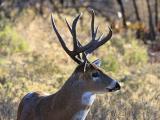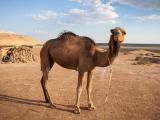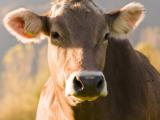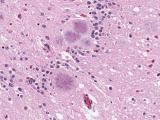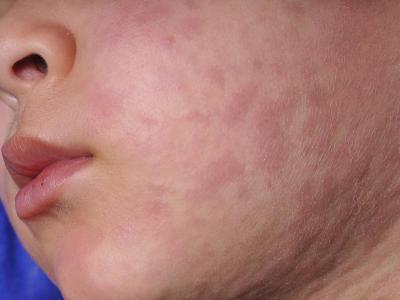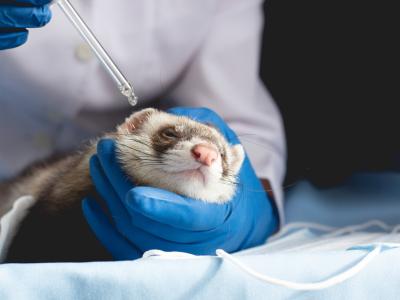Jan 11, 2005 (CIDRAP News) – Canada today reported its third confirmed case of bovine spongiform encephalopathy (BSE), just 9 days after confirming its second case.
The case was in an Alberta beef cow just under 7 years old, the Canadian Food Inspection Agency (CFIA) said. "No part of the animal has entered the human food or animal feed systems," the agency said.
The cow was tested in Canada's normal BSE surveillance program, which targets high-risk cattle, officials said.
The CFIA said the definitive diagnosis of BSE, or mad cow disease, was made today at the Canadian Science Centre for Human and Animal Health in Winnipeg. An initial test by Alberta authorities was inconclusive, prompting confirmatory testing at the Winnipeg lab.
Investigators have identified the cow's birthplace and determined that it was born in March 1998—after Canada imposed its 1997 ban on the feeding of ruminant animal protein to ruminants. "Based on preliminary information, feed produced prior to the introduction of the 1997 feed ban in Canada remains the most likely source of infection in this animal," the CFIA said.
Cattle are believed to contract BSE by eating protein from infected cattle. Until 1997, both Canada and the United States allowed the use of cattle parts in cattle feed. Humans who eat meat products from BSE-infected cattle are thought to be at risk for variant Creutzfeldt-Jakob disease (vCJD), the fatal human equivalent of BSE.
"Public health remains protected through the removal of specified risk material (SRM) from all animals slaughtered for human food," the CFIA said. SRMs are tissues that are likely to contain the BSE agent if the cow is infected.
The CFIA said Canada's BSE safeguards "have been designed with the understanding that BSE is potentially present in a small and declining number of animals. This includes animals born before and shortly after the 1997 feed ban. The Government of Canada continues to believe that the ruminant to ruminant feed ban introduced in 1997 has limited the spread of BSE and remains effective."
The initial announcement of Canada's second BSE case came Dec 30, the same day the US government announced plans to lift its BSE-related ban on the importation of live Canadian cattle. Starting Mar 7, the US Department of Agriculture plans to allow the importation of Canadian cattle less than 30 months old and destined for slaughter before they reach that age. The move was based on a determination that Canada is a "minimal risk" country for BSE.
The head of USDA's Animal and Plant Health Inspection Service (APHIS), Dr. Ron DeHaven, said today that the USDA is still confident that Canadian and US BSE safeguards provide "utmost protections" to US consumers and cattle. However, he said the agency will send a technical team to Canada to look into the latest cases.
"Since this animal was born shortly after the implementation of Canada's feed ban and to determine if there are any potential links among the positive animals, we will expedite sending a technical team to Canada to evaluate the circumstances surrounding these recent finds," DeHaven said.
"We appreciate Canada's willingness to cooperate and assist us in these efforts," he added. "We will continue our ongoing work with Canadian officials in their epidemiological investigations to determine the facts of these cases. . . . The result of our investigation and analysis will be used to evaluate appropriate next steps in regard to the minimal risk rule published last week."
All three of Canada's BSE cases have occurred in Alberta. The first was discovered in May 2003, and the second was confirmed on Jan 2 of this year. The latter involved an 8-year-old dairy cow from a farm northwest of Edmonton. The CFIA said the investigation of the latest case is independent of the probe into the second case.
The United States' only known BSE case, discovered in Washington state in December 2003, involved a cow that came from an Alberta herd.
USDA officials have said that the World Organization for Animal Health (OIE) classifies a country as "minimal risk" if fewer than two cows for each million cattle older than 24 months are found to have BSE during the previous 4 years. Canada has about 5.5 million cattle in that age range, which would allow for up to 11 BSE cases without jeopardizing its minimal-risk status.
See also:
